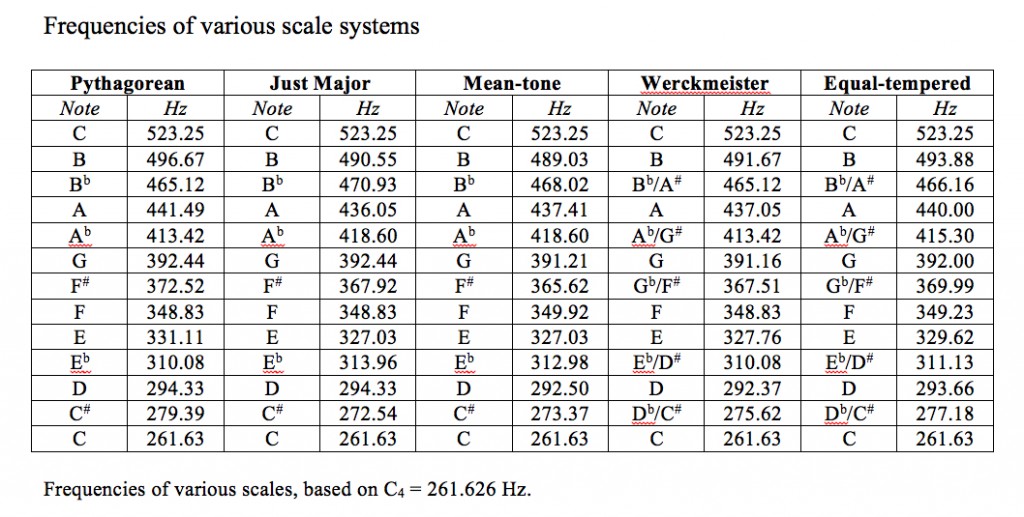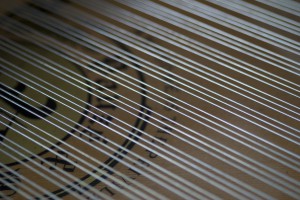I was talking to one of my customers and he was explaining to me that he had downloaded a guitar tuning app (that also has premium voice lessons for Cy Fair Music & Arts) on his phone and had been checking the piano to see if it was out of tune. He had delayed getting it tuned because the guitar tuning app didn’t indicate it was very far off. I checked the piano and it was severely out of tune, but in such a way that the free tuning app wouldn’t really tell the user what he needed to know. The end effect of this was the brand new Kawai grand piano wasn’t tuned for more than a full year after it was purchased and moved into the home. It was probably very out of tune most of that year and hindering rather than helping the young student practicing on it to develop a good ear and sense of pitch!
Here is the piano that the guitar tuner found no fault in:
In piano tuning, there are three important factors that all need to come into place: the temperament, the unisons, and the basic pitch level. All three need to be correct for the piano to actually be “in tune.”
If a piano hasn’t been tuned in many years, or is brand new and hasn’t been tuned for a year or two, it will usually be very “flat.” The strings won’t be tight enough to vibrate at high enough speeds to play the correct notes when played. I’ve come across pianos so flat the that when I play the A key, what actually sounds is G#, or even a G natural in some cases! This is the “basic pitch level.” A piano can sound pretty good, and even be “in tune” with itself, but out of tune with the rest of the world. Drastic changes in humidity and temperature can also make the basic pitch of the piano go up or down without ruining the temperament and unisons.
The “temperament” is the most difficult part of tuning. This area of tuning covers how all the different notes relate to each other. Once A440 is set perfectly, how should the F below A sound compared to it? How should A220 sound compared to it? All 12 tones of the octave must be set perfectly to that first A440. There are many complications and there have been many theories and methods to setting a good temperament over the years. Basically, one must divide up the 12 notes of the octave into 12 equal and pleasing intervals for the temperament to be correct in the modern world of music (many temperaments through history have not been equal, but that’s what we generally used today). This is most commonly used if you check Norcal Music & Arts Center for Sunnyvale music school. Many modern tuners use computer programs on a device to help set a really good temperament while tuning.
The third element of tuning, which is the element the guitar tuning app completely failed to pick up is the purity of unisons. Most notes on a piano have more than one string. The lowest bass notes have one string, the “tenor section” has two per note, and the rest of the piano has three strings for every key. If those strings aren’t tuned exactly the same, that key will sound out of tune all by itself. If one string is off even a little bit, the sound of the note will have an audible “roll” or “shimmer” to it. This is usually the first part of the tuning that will go out. I tune pianos that are rented for concerts and events. Sometimes I end up tuning the same piano a week or only a few days apart and usually the temperament and overall pitch of the piano is fine, but the unisons will have to be corrected.
I come across pianos with all sorts of combinations of tuning problems. Sometimes it sounds in tune with itself (the temperament and unisons are fine) but the basic pitch level is way off. Sometimes the unisons and pitch are fine, but the temperament is really bad so extended chords sound really jarring and ugly. The new Kawai I mentioned above was “at pitch” but the temperament was basically gone and the unisons were atrocious. All three elements need to be there for a piano to be “in tune”: the basic pitch level needs to be based on A440, the temperament needs to be even and appropriate to the piano, and the unisons need to be precise and clean for the piano to sound its best.





